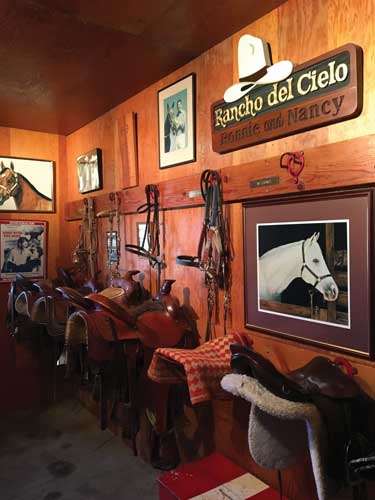Last February, I had the privilege of speaking to a group of leaders in Christian education at the Reagan Ranch Center in California. Between speaking responsibilities, I managed to work in some time for a tour. It was the first time I had visited the center or the Reagan Presidential Library; the tour of the ranch itself was something I had been wanting to do for decades. I was thrilled at the prospect of getting a glimpse into President Reagan’s life and career from a source other than the books and documentaries in my personal library.
A former horseman myself, having spent countless hours in the saddle, I have always been intrigued by Reagan’s ranch, especially knowing the special place it held in the president’s life. I remember seeing images of Prime Minister Margaret Thatcher lunching there, of Premier Gorbachev walking the grounds with him, and of the gathering of the press corps when the president signed his earliest legislation packages. I also remember those great images of the 40th president running a chainsaw, driving that old red Jeep, building fences, and saddling his own horse. The picture of a man of his stature willing to get his hands dirty, do his own chores, and enjoy the outdoors — that was powerful to me. To see a vibrant world leader deep into his senior years, smiling, brimming with optimism and hope, yet tough and serious about the real threats abroad and the economic perils at home — that was instructive. The images and footage of the president at his ranch took hold of me and made him seem human and heroic at the same time.

On our tour, we passed through the humble house that was surprisingly small, modestly appointed, and full of expressions of the president’s personality. He did much of the work in the house himself. From the linoleum floor in the kitchen to wiring together a pair of twin beds to make an adequate sleeping arrangement for the first couple, you could see that the president, who was never seen in his shirtsleeves in the oval office, was still very much down-to-earth. As we toured the ranch, it was also apparent that he derived inspiration there, that time on horseback riding over the hills and through the ruddy washes did not simply help him relax; it buoyed his spirit and lifted his vision.
At one spot overlooking a lush valley to the northeast and the Pacific to the west, the guide told us that President Reagan referred to the spot as “Psalm 121.” That psalm was one of the president’s favorites and reads, “I will lift up mine eyes to the hills, from whence cometh my help. My help cometh from the LORD, which made heaven and earth.” What a fitting verse for the place. Psalm 121 is said to have been sung by pilgrims journeying through hard places. It is not difficult to see why. Ruggedness and beauty, adversity and hopefulness, challenges and optimism — these are not incompatible. They are complimentary. In this is a great lesson.
We have great reason to be hopeful, even when the road is hard. God promises that we are never alone, never beyond His watch and care, and never lacking what we truly need. Through the hard realities of life, we hold fast to this. The work of Christian education at all levels has never been more challenging, yet never more needed nor more important. In the midst of great challenges, we have new opportunities, and though there are tough roads ahead, we see momentum and take heart.
At Cairn, we look to the future with this view. We are launching new programs, exploring new opportunities, and gathering new friends and supporters, all for the purpose of sending servants of Christ out into this world for purposes greater than their own self-interest. In this issue of Cairn Magazine, you will see that the future is full of promise and that God is blessing and providing. His great faithfulness truly is for all generations.
Dr. Todd J. Williams has been the president of Cairn University since January 2008. He served on the faculty and administration from 1996 to 2001, and then returned as provost in 2005. He can be reached by emailing president@cairn.edu.